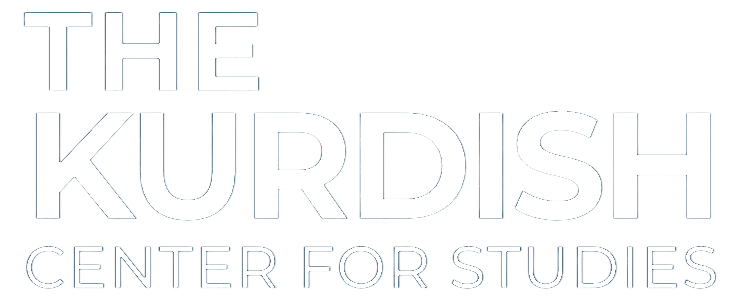Since the start of the 20th century, the discipline of Kurdish studies and the West’s understanding of Kurdish culture lagged behind all other ethnographic analyses produced on the Middle East. Consequently, the images produced about Kurdish culture and identity were often fragmented and incomplete at best. At worst, they were erroneous and demonstrated a total lack of knowledge and information about certain aspects of Kurdish identity, especially in relation to the historicity of the Kurds in the region. That is, until Mehrdad Izady’s seminal book, “The Kurds: A Concise Handbook”, emerged in 1992.
Mehrdad Izady, born to a Kurdish father and a Belgian mother in 1963 remains one of the most influential native Kurdish historians to date. Finishing a BA degree in History, political Science and Geography at Kansas State University (1976), he moved on to complete a Masters in Geography (1978) and then later in Political Science and International Relations from Syracuse University (1979) as well as Middle Eastern Languages and Civilizations at Columbia University (1986). He completed a PhD at the Department of Middle Eastern Languages and Civilizations at Columbia in 1992. Though his perspective on Kurdish history and histography challenged many previously established theories around the Kurds and their ancient culture, his views have continued to remain influential in Kurdish studies.
Consequently, this book continues to inform and educate a generation of Kurds and students of Kurdish studies, because it is one of the first texts of its kind to provide a comprehensive introductory analysis of Kurdish geography, history, religions, language, literature, and the economy. As a result, students, teachers, travelers, the press, and the general public would benefit from reading this guide book to a people’s past. In fact, this influential text acts as one of the earliest reference books that highlight the rich and complex nature of Kurdish identity, culture, and existence. Accordingly, students of Kurdish studies should familiarize themselves with this text as an introductory analysis containing essential aspects of Kurdish identity.
Early on, Izady argues that his intention in producing this text was to reclaim and delineate the ancient and unique culture of the Kurds from the violent clutches of the nation-states occupying Kurdistan. From relics of Kurdish culture linked back to burial practices, to earliest remains in the ancient Shanidar Caves around Hewler in Southern Kurdistan indicating that the Kurds resided in the region for tens of thousands of years, to identification of Kurdish rugs and kilims—Izady makes it resoundingly clear that Kurdish culture has indelibly managed to retain its unique and authentic persona.
This is, as Izady points out, despite the decades of violence and assimilation policies by the surrounding occupying nations of Iran, Iraq, Syria, and Turkey—who have committed every effort to silence and even eliminate the existence of Kurdish identity throughout Greater Kurdistan.
As Izady points out in the preface, “it is an astonishing fact, if not an outright embarrassment, that not a single archeological object has ever been identified as ‘Kurdish’ in any museum anywhere in the world—not even a broken arrowhead, a pottery shard, or a piece of mosaic.” Indeed, Izady argues further that the nation-states that occupy Kurdistan, “have attempted to stop the growth of the Kurdish people as a distinct and separate national entity. Often they have tried to do away with them altogether.”
One must wonder then, why the Kurds, whose origins can clearly be traced back at least several millennia, are deemed as a cultureless, divided people who lack a cohesive identity and mythos? Why they are seen as a rootless people whose origins cannot be traced back to any region? Why they lack philosophers, historians, religious figures, artists, musicians, and leaders, unlike the supposedly rich mosaic of the Persian, Arab and Turkish people who surround and dominate them? Why is, as Izady points out, knowledge of the Kurds so scarce? Rather than believing that the Kurds simply mysteriously appeared from nowhere, could it be that a more logical conclusion is that their identity, history, and contributions have been appropriated by all the surrounding nations that continue to occupy and deny the rights of the Kurds to exist as a separate people?
Yet, despite this logic and ample evidence attesting to the efforts of the surrounding nations to eliminate and curtail Kurdish identity and aspirations, the erroneous notion that Kurds lack a definitive history, culture, and presence in the region—known as the cradle of civilization—continues to prevail. For this reason, Izady’s mission to clearly identity, mark, and highlight various aspects of Kurdish identity, presence, and historical impact is a defiant act of resistance against the decades of cultural appropriation, colonization, and erasure against the Kurds.
It is no surprise to Izady that the archeological and zoological-botanical impact and evidence of the Kurds in the mountains and valleys of Kurdistan is not only ample, but also well documented. Paleolithic and Neolithic evidence from the caves of Behistan (Mt. Bistun) date back to 10,000 years ago, while remnants from the of Shanidar caves are as ancient as 55,000 years ago. Further significant evidence, including copious archeological proof, indicates that Kurdistan’s mountains were the incubator for the invention of agriculture dating back to approximately 12,000 years ago. Other evidence, such as glazed and fired pottery make appearances across Kurdistan, predating that of glazing in Mesopotamia and China by an astonishing 2,000 years. Additionally, clay tokens known as “proto-Elamite” appeared around 4,500 years ago. This evidence indicates that Kurdistan is one of the earliest literature communities in the world, coming only second to Mesopotamia.
While most texts on the Kurds focus on modern Kurdish geopolitical struggles, specifically their history of tragic marginalization and oppression, Izady’s text serves to set the foundation for the powerful presence and influence of the Kurds in the cradle of civilization. Since the rise of the colonial nation-state model in the Middle East and the imposition of artificial borders, research on the Kurds and their identity has consistently focused on the oppression, numerous genocides, ethnic cleansings, and pogroms that have befallen the Kurdish people.
Such texts also often point to the lack of unity amongst the Kurds and their linguistic and geographic diversity as the chief reason for their violent assimilation and outright domination. As if the colonized are to be condemned for their colonization, placing further blame and fault on the marginalized and the dispossessed. Yet, in Izady’s text we are introduced to the rich tableau of a culture whose diversity is an indication of the strength of the Kurds and the reason for their continued survival despite such a harsh and hostile geopolitical environment wholly dedicated to their erasure.
From a comprehensive list of all the tribes across the four regions of Kurdistan, to ancient and modern maps delineating the sites of Kurdish existence and continued presence, to an extensive bibliography and reading list, Izady’s book remains an essential text for all students of Kurdish studies. Few books on the Kurds have dared to go where Izady has gone, as most simply reinforce the continued domination of Eurocentric perspectives on the Kurds, whose often flawed assumptions continue to prevail in the study of these ancient people. In this regard, Izady’s book initiated the lengthy process of decolonizing Kurdish studies and history, a process which is still ongoing—and undoubtedly requires much more time and effort by researchers in Kurdish studies to continue. As students of Kurdish studies, it is imperative that we take on Izady’s mantle and continue to decolonize and locate long lost truths and facts about the Kurds and their undoubtedly prehistoric presence in the Middle East.
The book can be found in multiple languages including in English, French, Sorani Kurdish, Persian and Turkish.




Comments are closed, but trackbacks and pingbacks are open.